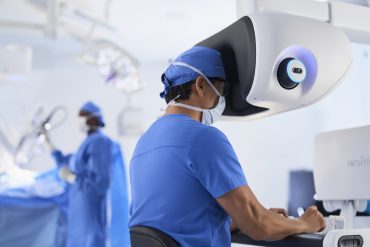
- Healthcare
California Closes Stem Cell Bank, Shifts to Clinical Impact
5 minute read

California stem cell agency pivots $3.8 billion budget toward clinical investments as flagship biobank proves financially unsustainable
Key Takeaways
- CIRM closes world’s largest stem cell biobank due to unsustainable operating costs of $300,000 annually that far exceeded revenue from low cell line sales
- Fire sale prices drop up to 70% with stem cell lines now available for $225 in bulk, down from original prices of $750-$1,500 per vial
- Strategic pivot frees up $3.8 billion budget as California agency shifts focus from costly infrastructure to higher-impact clinical and manufacturing investments
Introduction
The California Institute for Regenerative Medicine is shutting down the world’s largest collection of induced pluripotent stem cells and launching an unprecedented fire sale to dispose of thousands of valuable research samples. The closure marks a dramatic shift in public biomedical funding strategy as the state agency abandons costly infrastructure in favor of targeted investments with greater clinical impact.
CIRM’s biobank houses iPSCs from both healthy donors and patients with diseases including Alzheimer’s, autism, and kidney disorders. These cells serve as crucial research tools for understanding disease mechanisms and developing treatments across multiple therapeutic areas.
Key Developments
The institute determined that operating costs proved unsustainable despite the repository’s scientific value. Initial operational expenses reached $400,000, with ongoing annual costs of $300,000 that dramatically exceeded revenue from cell line sales.
Usage by researchers remained consistently low relative to expectations, creating an unsustainable financial model. The biobank supported research at 128 institutions across 22 US states and 21 countries, but demand failed to justify the substantial operational investment.
CIRM now offers cell lines at drastically reduced prices to ensure valuable assets avoid disposal. The aggressive discounting represents a classic strategy to recoup costs while maximizing scientific utility of existing inventory.
Market Impact
The fire sale pricing creates immediate opportunities for research institutions and biotechnology companies. Academic researchers previously paid $750 per vial while for-profit companies paid $1,500, but bulk purchases now start at $225 per cell line.
The closure reflects broader market dynamics as stem cell lines become available from multiple sources, including private companies and international repositories. This increased competition has eroded CIRM’s unique market position and reduced demand for its premium-priced offerings.
Advances in reprogramming technology have made it easier for institutions to develop their own cell line collections, further diminishing the biobank’s competitive advantage in the research tools market.
Strategic Insights
CIRM’s decision represents a fundamental shift from maintaining costly infrastructure toward investments with clearer paths to clinical and commercial impact. The agency’s new Strategic Allocation Framework prioritizes manufacturing capabilities and translational research over basic research infrastructure.
The closure may accelerate decentralization in stem cell research as institutions develop independent capabilities rather than relying on centralized repositories. This trend could drive innovation while reducing dependence on public funding for research infrastructure.
The move serves as a cautionary example for publicly funded life science ventures that sustainable business models require clear market demand and adaptive strategies, even with scientifically valuable products.
Expert Opinions and Data
According to STAT, the repository’s iPSC lines underwent rigorous quality control and used non-integrating episomal reprogramming, making them particularly valuable for studying genetic diversity and disease mechanisms.
Industry observers note that CIRM’s strategic pivot reflects broader pressures on publicly funded biomedical infrastructure. The agency has distributed $4 billion in grants since its establishment and faces a potential funding referendum as early as 2028 with $3.8 billion remaining in its budget.
Research community leaders express disappointment at losing access to the comprehensive collection while acknowledging the financial realities driving the closure. Many view the decision as pragmatic but unfortunate, highlighting sustainability challenges for large-scale biobanking operations.
Conclusion
The CIRM biobank closure underscores the financial pressures facing publicly funded research infrastructure in biotechnology. The decision reflects a strategic calculation that remaining resources can generate greater impact through targeted investments rather than maintaining costly, underutilized facilities.
The closure demonstrates how rapidly evolving technology and market dynamics can render even well-designed research infrastructure obsolete. CIRM’s experience highlights the need for constant reassessment of cost structures and market demand in publicly funded life science initiatives.








